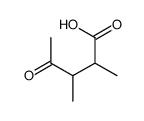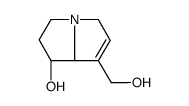315-22-0
| Name | monocrotaline |
|---|---|
| Synonyms |
Monocrotaline/crotaline
Monccrotalire Bulbus Lilii CROTALINE (13a,14a)-14,19-Dihydro-12,13-dihydroxy-20-norcrotolanan-11,15-dione Monocrotaline 2H-[1,6]Dioxacycloundecino[2,3,4-gh]pyrrolizine-2,6(3H)-dione, 4,5,8,10,12,13,13a,13b-octahydro-4,5-dihydroxy-3,4,5-trimethyl-, (3R,4R,5R,13aR,13bR)- (3R,4R,5R,13aR,13bR)-4,5-Dihydroxy-3,4,5-trimethyl-4,5,8,10,12,13,13a,13b-octahydro-2H-[1,6]dioxacycloundecino[2,3,4-gh]pyrrolizine-2,6(3H)-dione MONOCRATALINE MFCD00084656 A 6080 MONOCROTALIN CROTALIN Crotaline,Monocrotaline |
| Description | Monocrotaline is an pyrrolizidine alkaloid extracted from the seeds of the Crotalaria spectabilis plant to induce pulmonary hypertension in rodents. |
|---|---|
| Related Catalog | |
| In Vitro | Monocrotaline (MCT) is an 11-membered macrocyclic pyrrolizidine alkaloid (PA) derived from the seeds of the Crotalaria spectabilis plant[1]. Monocrotaline a natural ligand exhibits dose-dependent cytotoxicity with potent antineoplastic activity. The in vitro cytotoxicity of monocrotaline is proved at IC50 24.966 µg/mL and genotoxicity at 2 X IC50 against HepG2 cells[2]. |
| In Vivo | MCT causes a pulmonary vascular syndrome in rats characterized by proliferative pulmonary vasculitis, pulmonary hypertension (PH), and cor pulmonale[3]. Among preclinical models of pulmonary arterial hypertension (PAH), monocrotaline animal model offers the advantage of mimic several key aspects of human PAH, including vascular remodeling, proliferation of smooth muscle cells, endothelial dysfunction, upregulation of inflammatory cytokines, and right ventricle failure, requiring a single drug injection[4]. Changes in multiple pathways associated with the development of PH, including activated glycolysis, increased markers of proliferation, disruptions in carnitine homeostasis, increased inflammatory and fibrosis biomarkers, and a reduction in glutathione biosynthesis are observed with the injection of monocrotaline[5]. |
| Animal Admin | Rats: A total of 20 male Sprague Dawley rats (SD; 220-270g) are used in this study (n=10 per group). Control group received vehicle for monocrotaline (MCT). Pre-pulmonary hypertension (PH) group received a single injection of MCT (60 mg/kg i.p.) to induce and are sacrificed after 14 days[5]. |
| References |
| Density | 1.4±0.1 g/cm3 |
|---|---|
| Boiling Point | 537.3±50.0 °C at 760 mmHg |
| Melting Point | 204ºC (dec.)(lit.) |
| Molecular Formula | C16H23NO6 |
| Molecular Weight | 325.357 |
| Flash Point | 278.7±30.1 °C |
| Exact Mass | 325.152527 |
| PSA | 96.30000 |
| LogP | -0.37 |
| Vapour Pressure | 0.0±3.2 mmHg at 25°C |
| Index of Refraction | 1.586 |
| Storage condition | 2~8°C |
CHEMICAL IDENTIFICATION
HEALTH HAZARD DATAACUTE TOXICITY DATA
MUTATION DATA
|
| Symbol |


GHS06, GHS08 |
|---|---|
| Signal Word | Danger |
| Hazard Statements | H301-H351 |
| Precautionary Statements | P281-P301 + P310 |
| Personal Protective Equipment | Eyeshields;Faceshields;full-face particle respirator type N100 (US);Gloves;respirator cartridge type N100 (US);type P1 (EN143) respirator filter;type P3 (EN 143) respirator cartridges |
| Hazard Codes | T: Toxic; |
| Risk Phrases | R25 |
| Safety Phrases | 36/37/39-45 |
| RIDADR | UN 1544 6.1/PG 3 |
| WGK Germany | 3 |
| RTECS | QB3140000 |
| Packaging Group | III |
| Hazard Class | 6.1(b) |
| HS Code | 29399990 |
| Precursor 8 | |
|---|---|
| DownStream 8 | |




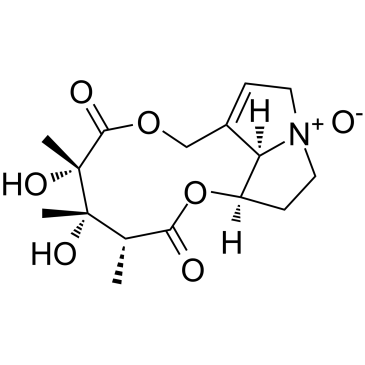
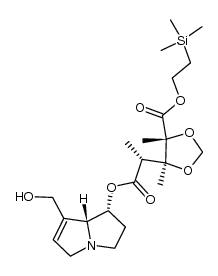
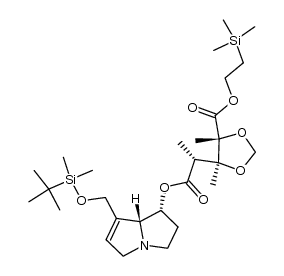
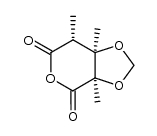
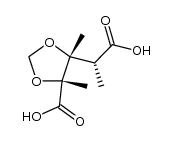
![(2'R,3R,4S)-5-[2'-methoxy-2'-(trifluoromethyl)phenylacetoxy]-2,3,4-trimethyl-3,4-methylenedioxy-2-pentene structure](https://image.chemsrc.com/caspic/082/121719-94-6.png)
![(2'R,2S,3R,4S)-5-[2'-methoxy-2'-(trifluoromethyl)phenylacetoxy]-2,3,4-trimethyl-3,4-methylenedioxypentanoic acid structure](https://image.chemsrc.com/caspic/006/121719-96-8.png)





